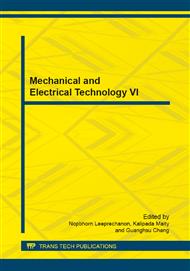p.125
p.130
p.135
p.145
p.150
p.156
p.162
p.166
p.173
Optimization of the Thrust Ripple of a Tubular Flux-Switching Permanent Magnet Linear Motor
Abstract:
The effective optimization methods are needed to reduce the thrust ripple for the tubular flux-switching permanent magnet linear motor (TFSPMLM), which is significant for reducing the vibration, and improving the reliability. The auxiliary teeth and core bridge are set and analyzed for the bipolar and single-polar winding structures. On this basis, this paper focused on a new method of the secondary pole pitch fine-tuning which can overcomes the disadvantages of increasing the volume, decreasing the average thrust, adding the cost, and so on. The influences of tuning the secondary pole pitch on the average thrust and the thrust ripple for the different winding structure motors are calculated and analyzed. The conclusion can provide reference for the application of the method of tuning secondary pole pitch to the TFSPMLM for different background demands.
Info:
Periodical:
Pages:
150-155
Citation:
Online since:
August 2014
Authors:
Price:
Сopyright:
© 2014 Trans Tech Publications Ltd. All Rights Reserved
Share:
Citation:


